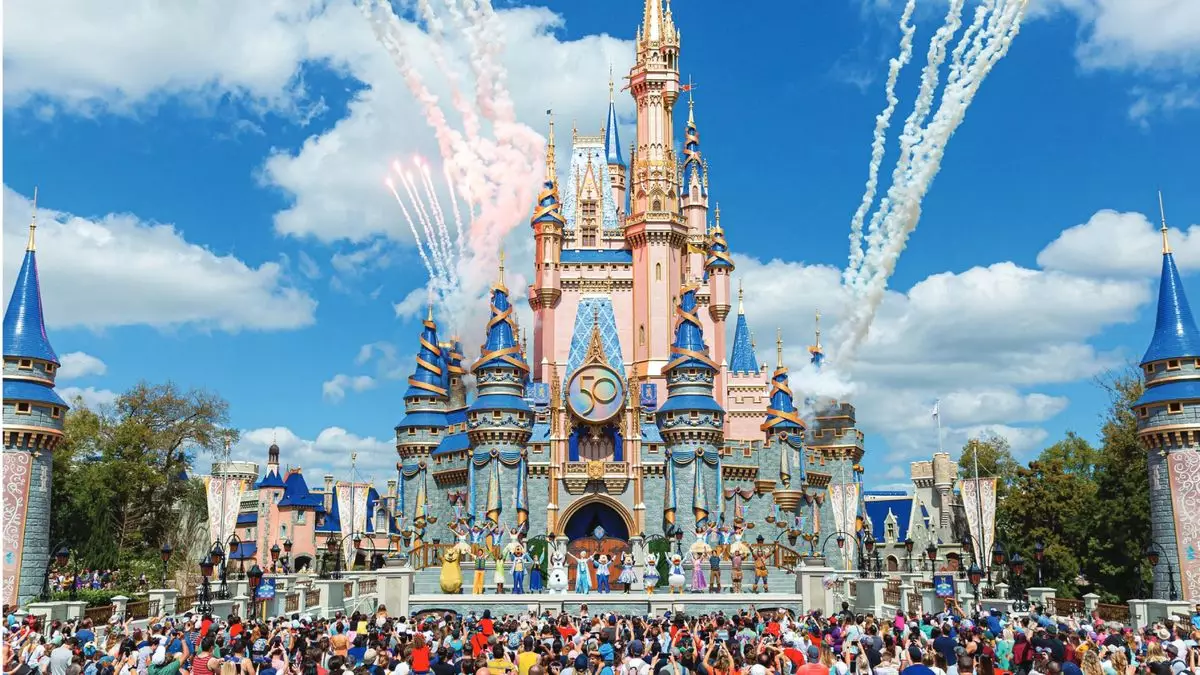In recent years, the influence of major corporations on local and national economies has become increasingly evident. One such powerhouse, the Walt Disney Company, commissioned a significant study to quantify the effect of its domestic resorts on the broader U.S. economy. The revelations from this analysis highlight the astounding economic importance of Disney’s Florida and California resorts, collectively generating a staggering $67 billion impact—a figure that underlines the theme parks’ roles as monumental economic engines in their respective regions and across the nation.
The research, undertaken by Tourism Economics, reveals that Disney’s resorts do not merely cater to fun and fantasy but also serve as vital contributors to economic vitality. Led by Michael Mariano, the firm’s head of economic development, the study emphasizes the resorts’ role in supporting local businesses, creating jobs, and generating tax revenues—important elements of a thriving economy that are sometimes overshadowed by the entertainment narrative that Disney is famous for.
Understanding the Economic Impact Methodology
To arrive at the impressive figure of $67 billion, the study utilized a thorough methodology that considered three critical components: direct impacts, indirect impacts, and induced impacts. Each of these categories sheds light on different facets of the economic influence exerted by Disney’s parks.
1. Direct Impacts: This category encompasses all economic activity connected directly to visitors. From entrance fees to souvenir sales and dining at resorts, the money spent while on property substantially contributes to the economy. However, it doesn’t stop there; it also includes spending at nearby hotels, restaurants, and even airports, all of which benefit from the influx of tourists flocking to Disney’s attractions.
2. Indirect Impacts: These effects arise from the supply-side, illustrating the spending by Disney on local goods and services. The procurement of food, merchandise, and operating materials from nearby suppliers creates a ripple effect that stimulates additional economic activity.
3. Induced Impacts: The wages and salaries of Disney and tourism-related employees circulate within the economy, further enhancing both local and regional spending. When cast members receive their paychecks, they contribute to the local economy by purchasing goods and services, thereby generating further growth.
This comprehensive approach highlights a critical point: Disney’s economic footprint is far-reaching, reinforcing the idea that the company is a cornerstone of financial stability for many individuals and businesses connected to it.
The Impact in Numbers
Examining the economic implications of Disneyland in Southern California reveals that the park contributed a remarkable $16.1 billion for the fiscal year 2024. This striking figure equates to nearly the same amount American consumers spent on pizza delivery that year, showcasing how significant a player Disneyland is in the local market. Furthermore, with over 102,000 jobs supported in the region, consisting of a substantial portion within Orange County, it is evident that Disneyland serves as the area’s largest employer, not merely another amusement park.
Similarly, Disney World’s impact on Florida’s economic landscape for the fiscal year 2022 amounted to $40.3 billion, facilitating approximately 263,000 jobs. The sheer magnitude of these statistics shows that Disney’s presence not only enhances tourism but also revitalizes the job market and benefits the economy at large.
In addition to the regional impacts derived from tourism, the collective economic activity produced by Disney’s resorts across the U.S. reached about $10.2 billion. This number reflects the purchases made from domestic suppliers and adds to the impressive $67 billion total economic impact—a figure that strikes a powerful chord when compared to other significant consumer spending events, such as holiday shopping or seasonal celebrations.
The Central Role of Disney in Economic Health
As we unpack the layers of economic implications formed through Disney’s parks, it becomes clear that these resorts offer far more than just entertainment. The interplay between tourism, job creation, and tax revenue formulation underlines the importance of nurturing such entities for broader economic health. While Disney continues to be a beacon of imagination and creativity, the dual reality of its role as an economic pillar cannot be ignored. The findings serve as a powerful reminder that investing in and supporting such institutions is not just a patronage of whimsical fun but also a commitment to sustaining economic growth and fortifying community foundations across the United States.


Leave a Reply